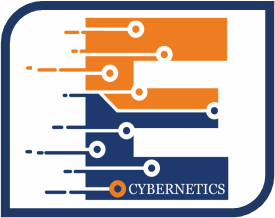MARKETING IMPLICATION OF UNDERESTIMATING THE DIRECT THREATS OF ARTIFICIAL INTELLIGENCE DEVELOPMENT
Анотація
There are tree common ways how people perceive the future. The first one assumes that the
future will be changing slowly and look like today’s with a little improvements. The second way
corresponds with the thought that the future will be the same or a little bit better. The third way
perceives the future to be worst a little bit comparing with today’s. But there are also the fourth way
that is rare among people perception. The fourth way assumes that the future will change rapidly
and be very different from its previous version. But the fourth way is the most rare compared with
three others.
Most people are not prepared for the rapid changes of the future effectively by themselves in
accordance with the fourth way. This also means that people don’t use forecasting models for their
own future and do not use forecasting in their professional activities too. For example, under the
conditions of the pandemic of coronavirus disease (COVID-19) beginning, most consumers of the
forecasting companies did not want to understand the processes of changes that were happening, but
they demonstrated their increasing demand on the ready-made decisions to resolve various current
problem situations and wanted to receive some clear road-maps and algorithms what they had to do
in the future step-by-step to achieve their economic goals [1; 2]. The results of the marketing
research, been conducted in 2023-2024 by us to study the perception of the risks from the rapid
development of Artificial Intelligence (AI), demonstrate that most intelligent respondents (79 %) do
not see and do not realize for themselves and for humanity as a whole the direct threat from AI
development.
This common attitude to forecasting risks of AI development has some hidden threads.
Firstly, it provokes vulnerability of a person, because this person does not concern about AI’s direct
impact on a human’s brain. They continue to believe that technologies remain to be controlled and
ruled by humans. But AI algorithms, for example, on social media as TikTok, Instagram, Facebook,
YouTube and so on, are able to increase the number of typical information posts on particular
topics. They impact on the human’s brain the same way as advertising campaigns change consumer
behaviour. However in contrast to advertising, AI may also isolate a human from other alternative
information on these social media that develops different human biases. On the other hand, biases
also correspond with AI too. And AI propositions to some particular person depend on information
that has been accumulated about his or her behaviour on internet (search queries on various internet
platforms, amount of time spent online, content viewed and so on).
Underestimating the direct threats of AI’s impact on a human’s brain develops some type of
marketing myopia, when externalities are not studied enough. AI and its direct impact on human’s
brain are turning into a new field of scientific research. AI needs to be studied as a phenomenon
when the tools for managing which are not yet investigated enough.

